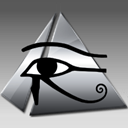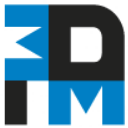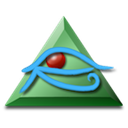Discovering the Best DICOM Izer Alternatives for Medical Imaging
DICOM Izer is a robust solution for capturing, integrating, and distributing medical images, designed to streamline workflows and ensure HIPAA compliance. It caters to a wide range of medical specialties, from Radiology to Dermatology, by facilitating multi-disciplinary image viewing and reducing the complexities of handling disparate media types. However, depending on specific needs, budget constraints, or preferred operating systems, healthcare professionals might seek a suitable DICOM Izer alternative. This article explores some of the top solutions available that offer similar functionalities, often with unique advantages.
Top DICOM Izer Alternatives
Whether you're looking for open-source flexibility, specific platform compatibility, or advanced features, there's a DICOM viewer out there that can meet your requirements. Here are some excellent alternatives to DICOM Izer:

Horos
Horos is a compelling free and open-source DICOM viewer for Mac, making it a great DICOM Izer alternative for macOS users seeking a cost-effective solution. Based on OsiriX, it offers robust DICOM viewing capabilities.

Osiri-LXIV
Osiri-LXIV is a free, open-source 64-bit DICOM viewer specifically designed for Mac OS X, based on the original OsiriX. It's an excellent choice for Mac users who appreciate open-source software and need 64-bit support as a DICOM Izer alternative.

3DimViewer
3DimViewer is a lightweight, free, and open-source 3D viewer for medical DICOM datasets, available for Mac and Windows. It's a solid DICOM Izer alternative for those who need basic 3D visualization without a lot of overhead.

MicroDicom
MicroDicom is a free application for primary processing and preservation of medical images in DICOM format, available on Windows. It's equipped with common tools for DICOM manipulation and offers image processing and portable features, making it a viable DICOM Izer alternative for Windows users.

AMIDE
AMIDE is a completely free tool for viewing, analyzing, and registering volumetric medical imaging data sets such as SPECT/PET/CT. It features 3D rendering and much more, available across Mac, Windows, and Linux, positioning it as a versatile DICOM Izer alternative for multi-platform environments.

OsiriX
OsiriX is a popular .DCM imaging equipment processing software with support for 2D, 3D, 4D, and 5D viewing. Available for Mac, iPhone, and iPad, and free for personal use, it's a powerful DICOM Izer alternative, particularly for Apple ecosystem users, offering strong image processing capabilities.

DICOMan
DICOMan is a commercial all-in-one DICOM Wizard for Radiation Oncology and Radiology, enhanced with built-in tools like a DICOM Decompressor, available for Windows. For those requiring a comprehensive, commercial DICOM Izer alternative with specialized features for radiation oncology, DICOMan is a strong contender.

Athena DICOM Viewer
Athena DICOM Viewer is a freemium medical imaging software for Windows, known for its high production capabilities and useful resources, including portability. It presents itself as an evolved DICOM viewer, making it a modern DICOM Izer alternative with flexible licensing.

DicomWorks
DicomWorks is a free DICOM viewer and utility for Windows that allows reading DICOM images locally (CDROM, hard disk), on a network (PACS), and exporting images to any destination. It's a straightforward and free DICOM Izer alternative for basic DICOM handling.

dicompyler
dicompyler is an extensible, fully open-source radiation therapy research platform and viewer for DICOM and DICOM RT. Available on Mac, Windows, and Linux, and built with Python, it's a powerful and flexible DICOM Izer alternative for researchers and developers in radiation therapy.
The landscape of DICOM viewers and medical imaging solutions is diverse, offering a wide array of features, platforms, and pricing models. While DICOM Izer is a comprehensive tool, exploring alternatives like those listed above can help you find a solution that perfectly aligns with your specific clinical workflow, IT infrastructure, and budgetary considerations. We encourage you to explore each option further to determine the best fit for your medical imaging needs.